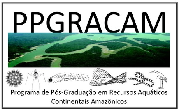Banca de DEFESA: POLIANE BATISTA DA SILVA
Uma banca de DEFESA de MESTRADO foi cadastrada pelo programa.DISCENTE : POLIANE BATISTA DA SILVA
DATA : 26/02/2019
HORA: 09:00
LOCAL: Sala de aula 03 - Anexo Amazônia
TÍTULO:
TAXONOMIC AND FUNCTIONAL STRUCTURE OF FISH ASSEMBLAGES IN THE LOWER AMAZON RIVER FLOODPLAIN
PALAVRAS-CHAVES:
Biodiversity, Floodplains, Amazônia, Ichthyofauna
PÁGINAS: 71
GRANDE ÁREA: Ciências Biológicas
ÁREA: Ecologia
SUBÁREA: Ecologia Aplicada
RESUMO:
The spatial heterogeneity and seasonal dynamics of the floodplain of the Amazon River support its high fish diversity and productivity. This study investigated relationships between hydrological variations and habitat types with the taxonomic and functional composition and structure of lowland floodplain fish assemblages. Fishes were sampled in areas of 440 habitats distributed among lakes, channels, forests and herbaceous during periods of low, rising, high, and falling-water. The river level quota, local environmental variables and landscape characteristics were also collected to analyze their relationships with the assemblage structure. A total of 16.053 individuals were collected from 194 species, 118 genera, 34 families and nine species. Redundancy analyzes indicated that the taxonomic and functional composition and structure of the fish assemblages were associated with water levels, as well as with local environmental, landscape and spatial variables. Piscivores, planktivores and omnivores as well as species with periodic and intermediate life history. were more strongly associated with high water levels. During low water levels, herbivores, invertivores and detritivores as well as species of large body size with equilibrium life history were the most representative groups. NMDS and dissimilarity analyzes showed differences between the trophic compositions of the habitats during the high water period, with lakes and channals being more similar to each other and dissimilar to forest and herbaceous habitats. Mean values of biomass in terms of CPUE of invertivoress, omnivores and piscivores were higher in the forest, while of detritivores and plankivores in lakes, and herbivores in herbaceous. These results suggest that changes in the natural hydrological regime and the degradation of habitats are likely to negatively impact the abundance and biomass levels and the taxonomic and functional structure of the tropical lowland fish fauna. Therefore, to conserve the productivity and taxonomic and functional diversity of fishes in the Amazonian floodplain it is necessary to conserve natural hydrological regimes as well as mosaics of habitat types within the ecosystem.
MEMBROS DA BANCA:
Presidente - 1961826 - FRANK RAYNNER VASCONCELOS RIBEIRO
Interno - 1844173 - SHEYLA REGINA MARQUES COUCEIRO
Externo à Instituição - ANDREA PONTES VIANA - UFOPA
Externo à Instituição - CARLOS EDWAR DE CARVALHO FREITAS - UFAM




